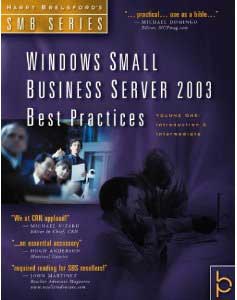Content
100% of Millennials Recognize Apple, Compared to 83% For Microsoft
BY: GraphicSprings
Study reveals public logo recognition of top 200 global companies
- Recognition for top IT companies such as Microsoft and IBM have dropped more than 40% in some cases between Baby Boomers and Millennials, whereas 100% of millennials worldwide recognize Apple.
- The Top 20 Chinese corporations are virtually unrecognizable in the United States, despite the fact that four of them are among the most profitable companies worldwide.
- Coca-Cola has the world’s most influential logo, followed by Sony, Ford Motor, Walt Disney and Apple.
Berlin, Germany, September, 2018 - Automated logo designers GraphicSprings have released a study revealing the world’s most powerful logos, in terms of public recognition. In order to understand the impact well-designed logos have on a brand’s success, the graphics company commissioned a poll asking individuals to identify the logos of the top 200 most profitable companies worldwide. The results of the study show that the profit and market value of a company do not always correlate with levels of recognition, as many of the world’s most profitable corporations are virtually unknown.
The study focuses on the top 200 corporations around the world based on yearly revenue, taking into account sales, profits and assets in US$ Billions. The visually-aided survey asked 24,000 participants from Europe, America and Asia to rank each logo on their recognizability, and the results are divided generationally, regionally and ranked by average responses. The participants were divided into the following age categories: Millennial, Xennial, Generation X and Baby Boomers. The results were then numbered and ranked. Each rank is expressed as a percentage, meaning that a rank of 100 indicates that 100% of respondents correctly identified the logo.
The full methodology can be found at the bottom of the press release.
To view the full results of the study, please see here:
The table below compares the generational recognition differences between Millennials and Baby Boomers of 6 IT companies which feature in the top 200 global corporations, all of which hail from The United States:
|
Company |
Logo |
Sales (in billion US-$) |
Profits (in billion US-$) |
Assets (in billion US-$) |
Market Value (in billion US-$) |
US Millennials |
US Baby Boomers |
EU Millennials |
EU Baby Boomers |
Asia Millennials |
Asia Baby Boomers |
|
Apple |
|
217.5 |
45.2 |
331.1 |
752 |
100 |
100 |
100 |
100 |
100 |
90 |
|
Microsoft |
|
85.3 |
16.8 |
224.6 |
507.5 |
75 |
95 |
85 |
95 |
90 |
90 |
|
Intel |
|
59.4 |
10.3 |
113.3 |
170.4 |
70 |
70 |
60 |
50 |
45 |
55 |
|
IBM |
|
79.9 |
11.9 |
117.5 |
162.4 |
60 |
100 |
25 |
70 |
30 |
45 |
|
HP |
|
48.7 |
2.5 |
28.2 |
29.4 |
75 |
90 |
70 |
65 |
45 |
35 |
|
Dell Technologies |
|
61.9 |
-3.7 |
118.2 |
13.5 |
45 |
80 |
5 |
0 |
5 |
5 |
The results above are a clear indicator of how brand recognition changes from generation to generation. Dell Technologies for instance is recognized by 80% of Baby Boomers, but only 45% of Millennials in America, whereas Apple is universally recognized, no matter the age of the respondents. Additionally, Microsoft is 90-95% recognized by those born from the 1940s to 1985, whereas it drops down to 75-85% for Millennials in US and Europe, suggesting that Apple reigns supreme with the younger generation in these regions. Interestingly, recognition for Microsoft in Asia remains high across all generations.
The table below reveals the top 10 most recognizable companies overall worldwide:
|
# |
Company |
Logo |
Country |
Market Value (in billion US-$) |
US (Average) |
EU (Average) |
Asia (Average) |
Total Average |
|
1 |
Coca-Cola |
|
United States |
182.9 |
100 |
100 |
100 |
100 |
|
2 |
Sony |
|
Japan |
40.4 |
100 |
100 |
97.5 |
99.16 |
|
3 |
Ford Motor |
|
United States |
44.7 |
100 |
100 |
97.5 |
99.16 |
|
4 |
Walt Disney |
|
United States |
178 |
100 |
100 |
96.25 |
98.75 |
|
5 |
Apple |
|
United States |
752 |
100 |
100 |
96.25 |
98.75 |
|
6 |
BMW Group |
|
Germany |
57.7 |
100 |
100 |
95 |
98.33 |
|
7 |
PepsiCo |
|
United States |
159.4 |
100 |
98.75 |
96.25 |
98.33 |
|
8 |
Toyota Motor |
|
Japan |
171.9 |
98.75 |
98.75 |
97.5 |
98.33 |
|
9 |
Volkswagen Group |
|
Germany |
72.9 |
97.5 |
100 |
92.5 |
96.66 |
|
10 |
Honda Motor |
|
Japan |
51.4 |
97.5 |
96.25 |
95 |
96.25 |
N.B. The full methodology can be found at the bottom of the press release.
The table below reveals the top 10 most profitable corporations in the world, and their logo recognition. Four are Chinese companies which all have very low recognition scores, even in Asian countries.
|
# |
Company |
Logo |
Country |
Profits (in billion US-$) |
US TOTAL (Average) |
EU TOTAL (Average) |
Asia Total (Average) |
Total Average |
|
1 |
Apple |
|
United States |
45.2 |
100 |
100 |
96.25 |
98.75 |
|
2 |
ICBC |
|
China |
42 |
0 |
5 |
21.25 |
8.75 |
|
3 |
China Construction Bank |
|
China |
35 |
0 |
0 |
6.25 |
2.08 |
|
4 |
Agricultural Bank of China |
|
China |
27.8 |
0 |
0 |
6.25 |
2.08 |
|
5 |
Bank of China |
|
China |
24.9 |
0 |
0 |
7.5 |
2.5 |
|
6 |
JPMorgan Chase |
|
United States |
24.2 |
93.75 |
10 |
15 |
39.58 |
|
7 |
Berkshire Hathaway |
|
United States |
24.1 |
50 |
7.5 |
2.5 |
20 |
|
8 |
Wells Fargo |
|
United States |
21.9 |
85 |
1.25 |
0 |
28.75 |
|
9 |
Alphabet |
|
United States |
19.5 |
13.75 |
10 |
1.25 |
8.33 |
|
10 |
Samsung Electronics |
|
South Korea |
19.3 |
88.75 |
91.25 |
98.75 |
92.92 |
Of the 10 corporations which 100% of Americans could identify, all were companies from the United States except for German BMW Group and Japanese Sony. Of the 51 corporations that 0% of the American public could identify, 63% were Asian companies hailing from China, Hong Kong, Japan, South Korea, and Thailand. In comparison, the only company which received 100% recognition from Asian respondents was Coca-Cola, while 47 corporations were completely unknown. Of these 51% were American companies, and one Chinese company was completely unrecognizable to Asian respondents.
Further Findings:
- It’s possible to tell where some companies are losing market ground with the younger generations. For example, Johnson & Johnson has a rating of 100 with US Generation X, 90 with US Xennials and just 75 with millenials.
- Interestingly, market value doesn’t seem to correlate exactly with higher global perception of the brand. American brand Alphabet have the second highest market value (579.5 billion US$), and yet only an overall score of 8.3. Similarly, Berkshire Hathaway has a market value of 409.9 billion US$ and yet only ranks an overall score of 20. However, it’s worth noting that their subsidiaries (Google for Alphabet for instance) have much more recognizable logos.
- Coca-Cola and PepsiCo are both universally recognized in the United States, however PepsiCo is marginally less well-known in Europe and Asia.
- While Chinese corporations are virtually unknown in The United States, the top 20 Japanese corporations are recognised by 27% of Americans, and of the 8 South Korean companies which feature, Americans recognize 33%.
Quotes:
“With the United States-China trade war at its most volatile to date, these results paint a very interesting picture about the recognition and perception of profitable companies in both nations. While major American brands are very well-known with consumers from Asian countries, less than 1% of the American public recognizes China’s top 20 most profitable corporations.” comments Evan Fraser, Head of Marketing at GraphicSprings. “It would be very interesting to run this same poll again in ten years, and see if there are any major changes. If China wins the trade war, then corporate recognition will most likely rise around the globe while American companies may get left behind, especially if the Chinese Government successfully negotiates trade deals with Europe and Canada.”
“Simplicity, elegance and strength - these are the defining factors of the highest scoring logos in this ranking.” says Evan Fraser, Head of Marketing at GraphicSprings. “Logos with these attributes are effective not only in being memorable, but they also tell us a story about what the company does, who they do it for and how well they do it.”
“At GraphicSprings, the logo and the correct branding can make a huge difference in the success of the company.” says Evan Fraser, Head of Marketing at GraphicSprings. “It is interesting to see how, depending on which generation you are in, different people can have a positive or negative perception of a brand.”
Books
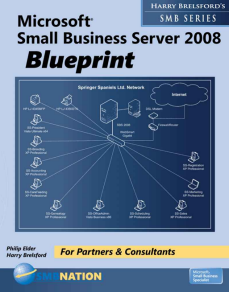
Microsoft Small Business Server
This ready guide to Microsoft's Small Business Server 2008 (SBS) product, now part of the Windows Essential Server Solutions family, is grounded in the real world and based on practical experience. As your blueprint, this book teaches you the SBS way! By using a structured deployment methodology and completing the step-by-step procedures, you will set up a secure SBS 2008 network for a sample small business the perfect way to properly implement SBS 2008.
This introductory/intermediate volume allows you to gain competency as an SBSer in: Windows Server 2008 Exchange Server 2007 Third-party security solutions: firewall, anti-virus, and more Remote Web Workplace SQL Server 2008 Windows SharePoint Services Faxing SBS 2008 administration and troubleshooting SBS Consoles Monitoring SBS 2008 Office Live and other hosted components Daily, Weekly, Monthly and Annual SBS 2008 tasks. You will also learn how to centrally control and manage Windows Vista and Windows XP desktops. Blueprint Pathways. Follow these fundamental blueprint paths to insure maximum SBS 2008 success using the content in this book: Plan, deploy, configure, and customize SBS 2008 using a tested methodology Support collaboration between workers Implement and encourage the use of remote working and mobility Protect the SBS 2008 network from security threats Back up and protect data using native and third-party tools Encourage and foster better communications with e-mail based on Microsoft Exchange Server 2007 Automate management by using Group Policy Objects.
Chapter Description
SECTION ONE: SMALL BUSINESS SERVER 2008 DEPLOYMENT 1. Welcome to SBS 2008 2. Small Business Server 2008 Design and Planning 3. Small Business Server 2008 Installation 4. Introduction to the SBS Consoles 5. SBS 2008 Deployment Small Business Server 2008 Photo Essay
SECTION TWO: EXTENDING SMALL BUSINESS SERVER 2008 6. Standard Security in SBS 2008 7. Messaging with Exchange Server 2007 and Outlook 2007 8. Collaboration with Windows SharePoint Services 9. Mobility and Remote Connectivity 10. Faxing and Print 11. Internet and the Web (RWW, Office Live)
SECTION THREE: SMALL BUSINESS SERVER 2008 ADMINISTRATION 12. Daily, Weekly, Monthly and Annual Tasks 13. Monitoring Small Business Server 2008
SECTION FOUR: SMALL BUSINESS SERVER 2008 ADVANCED TOPICS 14. Advanced Security 15. Small Business Server 2008 Premium Edition (LOB, SQL) Front Matter Index Appendix A: SBS Resources Appendix Z: Book Configurations Back Cover Test Important Small Business Server 2008 Blueprint is written from a strong, third-party viewpoint. This independent view insures you get the straight story on the popular SBS product, now in its 5th major release as the 2008 version. You also benefit from the author s broader SBS 2008 ecosystem conversation, which allows you to make the best decisions when you supplement your SBS 2008 network with third-party security, managed services and monitoring solutions.
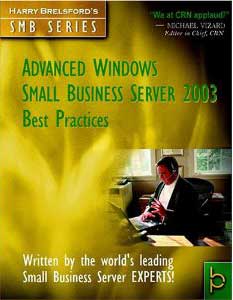
Advanced Windows Small Business Server 2003 Best Practices
This 1,075-page advanced SBS 2003 text was written by over a dozen leading SBSers, each with specific technical niche expertise. Delve deeply into SBS-specific applications and technologies in these chapters:
1 Introduction and Planning
2 Hardware
3 Licensing
4 Advanced Setup and Deployment
5 Third-party Tools for Advanced SBS Administration
6 Exchange Server 2003: Advanced Topics
7 Windows SharePoint Services: Advanced Topics
8 Remote Web Workplace: Advanced Topics
9 SQL Server 2000: Advanced Topics
10 Advanced Faxing
11 Advanced SBS Security: Part 1: General
12 Advanced SBS Security: Part 2: ISA 2004
13 Advanced Monitoring
14 Disaster Recovery
15 Migration
This is the book that flies faster, further and higher than any other previous SBS book in product history. When you register your book using the handy sign-up form (back of book), you will receive the PDF-based e-book copy (registered owners only). Readers are already reporting that this book pays for its cover price many times over with saved time and effort!
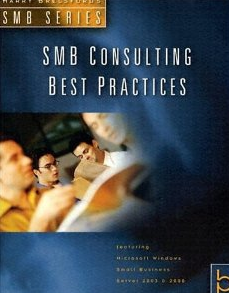
SMB Consulting Best Practices
This book serves the small and medium business (SMB) technology consultant seeking to make a great living as a professional service provider. Focused more on the "business" side than the "bits" side, it's all about: * Not only surviving but thriving as an SMB consultant by cultivating a superior portfolio of top flight customers with appropriate, effective and efficient business development approaches.
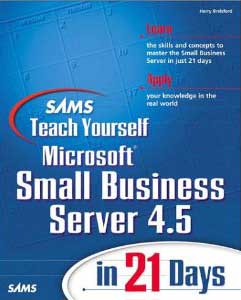
Sams Teach Yourself Microsoft Small Business Server 4.5 in 21 Days
Sams Teach Yourself Microsoft Small Business Server in 21 Days, gives the reader a hands-on guide to installing and managing Microsoft's Small Business Server (SBS) product. SBS is designed for the small business and contains many unique components and management tools. The introduction and success of SBS surprised many in several ways. Consultants and VARs have struggled with the SBS paradigm of performing all actions via the SBS management console. Windows NT Server professionals commonly error by treating SBS just like big BackOffice, a fatal mistake. Small business owners and staff, seduced by Microsoft's "just add water" SBS marketing message, are surprised at the on-going maintenance requirements of SBS. And few books and outside resources exist to guide consultants, VARs, small business owners and staff alike on their SBS journey. With step-by-step instructions based on real-world experience, Harry Brelsford will take the reader through all of the stages of installing and maintaining their SBS installations. Along the way, Harry will keep the reader on the right track and out of the many pitfalls that spell disaster for the user.
Newsletters
Sign up for our newsletter!
SMB Sunday Paper:
The Place to Start-up
or Start Over!
Dec. 20, 2020
Issue : 15-23
SMB Sunday Paper:
The Place to Start-up
or Start Over!
Dec. 13, 2020
Issue : 15-22
SMB Sunday Paper:
The Place to Start-up
or Start Over!
Dec. 6, 2020
Issue : 15-21
SMB Sunday Paper:
The Place to Start-up
or Start Over!
Nov. 22, 2020
Issue : 15-20
SMB Sunday Paper:
The Place to Start-up
or Start Over!
Nov. 15, 2020
Issue : 15-19
SMB Sunday Paper:
The Place to Start-up
or Start Over!
Nov. 8, 2020
Issue : 15-18
- GYST (Getting Your Shift Together)
- Top Players in MSS Space
- The Power of Story Telling- How to Become...
SMB Sunday Paper:
The Place to Start-up
or Start Over!
Nov. 1, 2020
Issue : 15-17
- Time to Start Preparing Your PPP Forgiveness
- Build A Winning Business Through Marketing Services
- Email Services
SMB Sunday Paper:
The Place to Start-up
or Start Over!
Oct. 25, 2020
Issue : 15-16
SMB Sunday Paper:
The Place to Start-up
or Start Over!
Oct. 18, 2020
Issue : 15-15
SMB Sunday Paper:
The Place to Start-up
or Start Over!
Oct. 11, 2020
Issue : 15-14
SMB Sunday Paper:
The Place to Start-up
or Start Over!
Oct. 4, 2020
Issue : 15-13
- Yay! We made the School for Startups Radio Show
- Do MSPs need to improve bedside manners? (YES!)
- Dharma Virus


